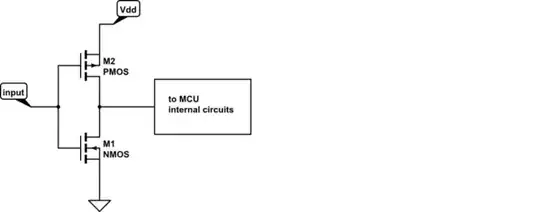I'm intending to use a PIC16F675, because it's what I have laying around, for a very simple task that involves turning on or off LEDs in response to changes in a pair of photodiodes. It really could all be done with basic components, but I'd much rather spend my time writing Assembly than tuning transistors.
At any rate, the 16F675 does have an ADC, but I don't want to use that, because I want the chip to sleep and respond to "digital" interrupts instead. This would normally be pretty straightforward, just drop in a potentiometer and turn it until the chip sees a "high" value when the correct amount of light is hitting the photodiode.
However, the datasheet has a warning I've never seen before:
Analog levels on any pin that is defined as a digital input, may cause the input buffer to consume more current than is specified.
This raises a few questions, most notably, what does this actually mean, and also why? According to the specs, 3V is well within its logic high range, but is this going to damage the chip by causing too much current draw? Or is it actually just a warning that the overall power consumption may go up compared to what the datasheet indicates? What if I instead wanted to connect a 3.3V digital output from another chip to it, would the same issue apply?
